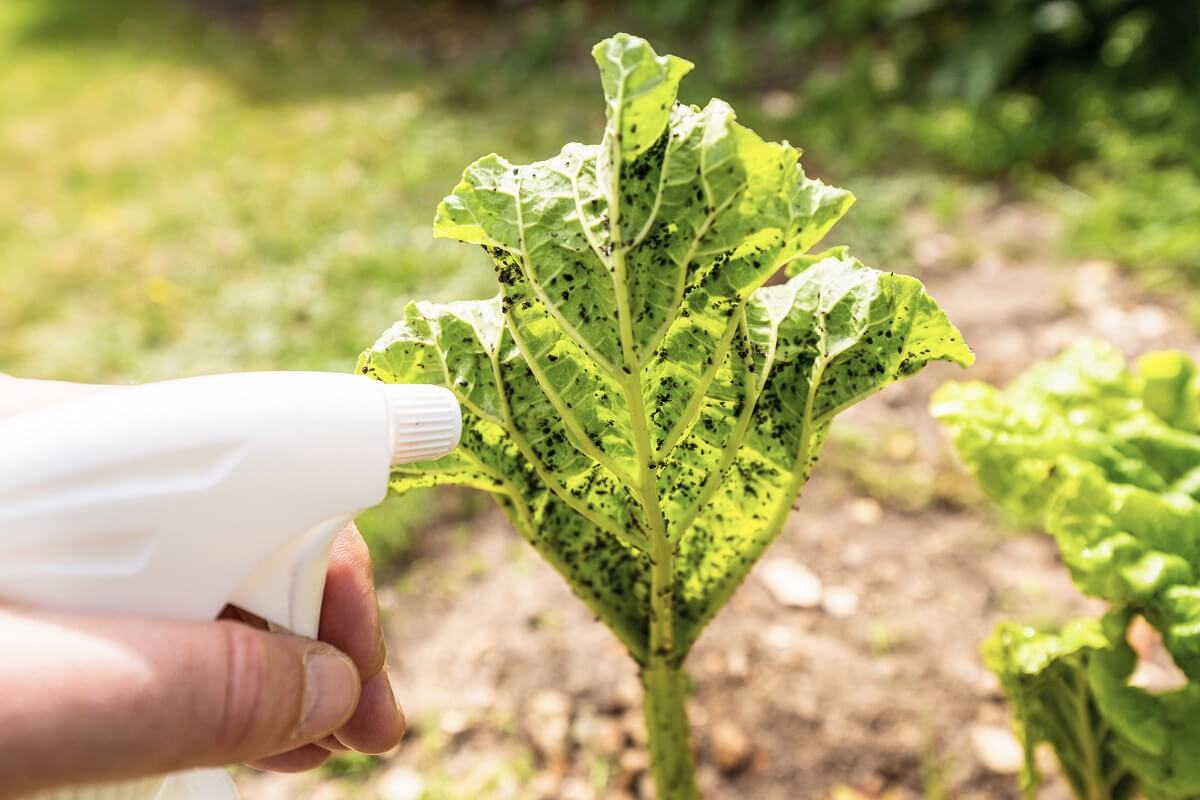Gardening enthusiasts are familiar with the tiny insect that attacks seedlings in the garden and can kill the plants within a few days. It’s called aphid and is widely known as a very annoying pest, but not every gardener manages to eradicate the colonies that are destroying their crop and flowering plants.
The tiny insect that attacks seedlings in the garden
The aphid is a tiny insect that sucks the sap from plants. They grow in large numbers and can kill the plants on which they take shelter. We can find them on the back of leaves, where they feed on all the nutrients that would normally reach the flowers or fruits of the plants.
Aphids are tiny, grey-green or black, and live in colonies on the backs of leaves, on the tops of shoots and on the lily pads. Their presence is massive especially in May and June, when they suck plant sap, prevent plant growth and can sometimes kill young plants.
The larvae appear in the spring
Aphids have a four-generation development cycle each year. The adult insect lays its eggs in the scales surrounding the shoots in October and in spring the larvae emerge and pupate on the underside of the leaves. From these emerge the females that will lay future eggs, and the cycle begins again.
Leaves attacked by aphids become misshapen and yellow and on the back of infested leaves, where the aphid colony can be seen with the naked eye. They also produce a sticky paste that simply suffocates the leaf.
Pruning shrubs and roses in autumn can interrupt the cycle of growth, but if aphids have appeared on a plant, the best solution is to treat it and prune severely in autumn. Treatments should be repeated the following spring to remove all colonies.
It should be noted that chemical treatments are effective and completely destroy aphids. It takes two to three sprays on warm, rain-free days to completely destroy an aphid colony. A good cleaning of the soil in autumn and spring is also mandatory, by removing all diseased plant parts and burning them.
Natural methods for removing aphids
There are also traditional methods that can help get rid of aphids. Treatment of roses, flowering trees and decorative shrubs is also effective with these environmentally friendly methods. These solutions should be applied as soon as aphids appear and preventively two to three more times after they disappear. Here’s some of the commonly used solutions:
Washing with a strong jet of water removes aphids and kills them. The method is not very effective, but it can be useful if applied at the first signs of attack.
Spraying the plants with water mixed with household soap is also effective.
Planting thyme and lavender bushes near roses keeps them safe from aphids, as these plants emit scents that repel lice.
Highly concentrated thyme or lavender tea sprayed on attacked plants is effective, but the effects only appear after two or three sprays.
Showering with water mixed with rubbing alcohol (one part alcohol, two parts water kills eggs and small larvae, and is a good treatment in the first phase of the attack. Repeat every few days.

